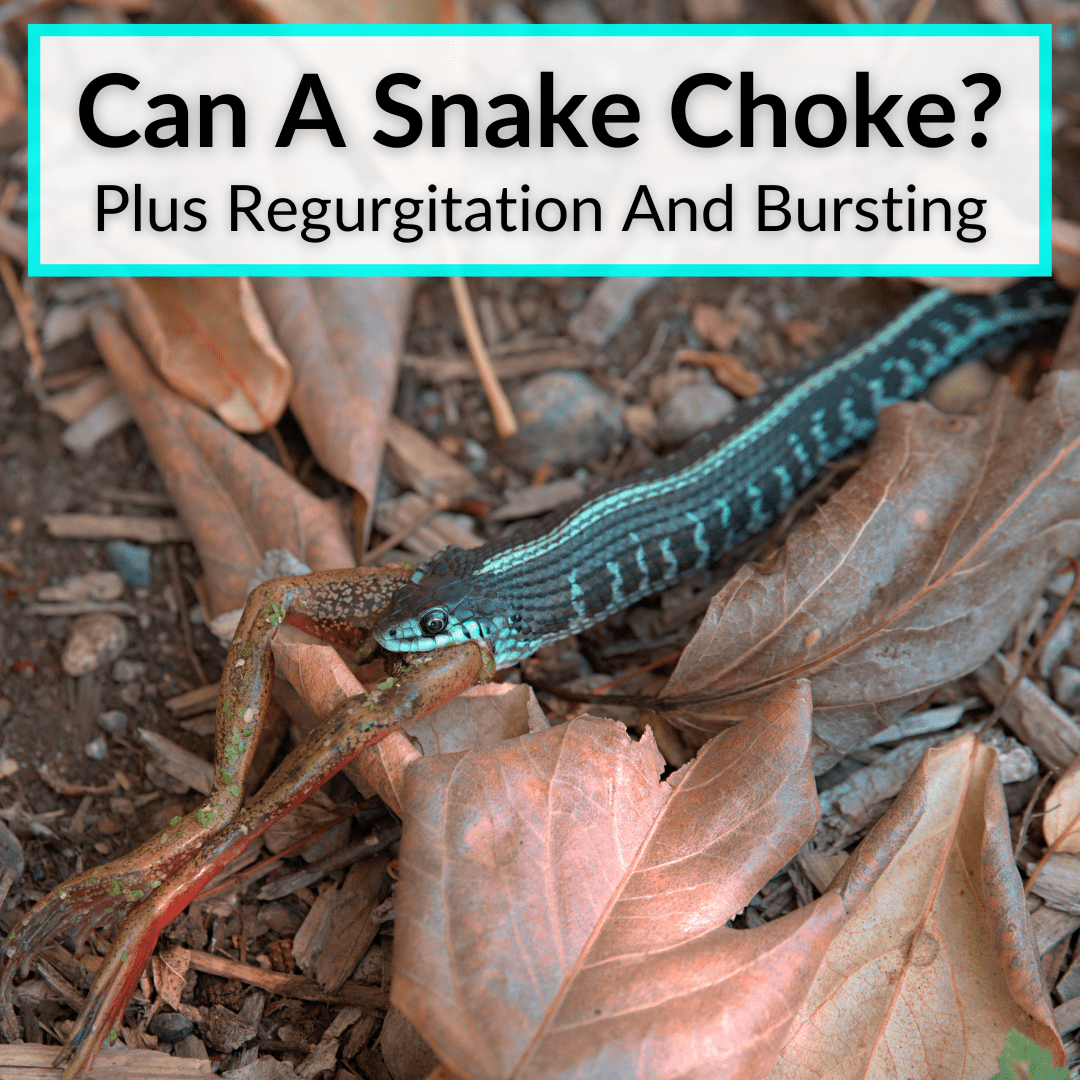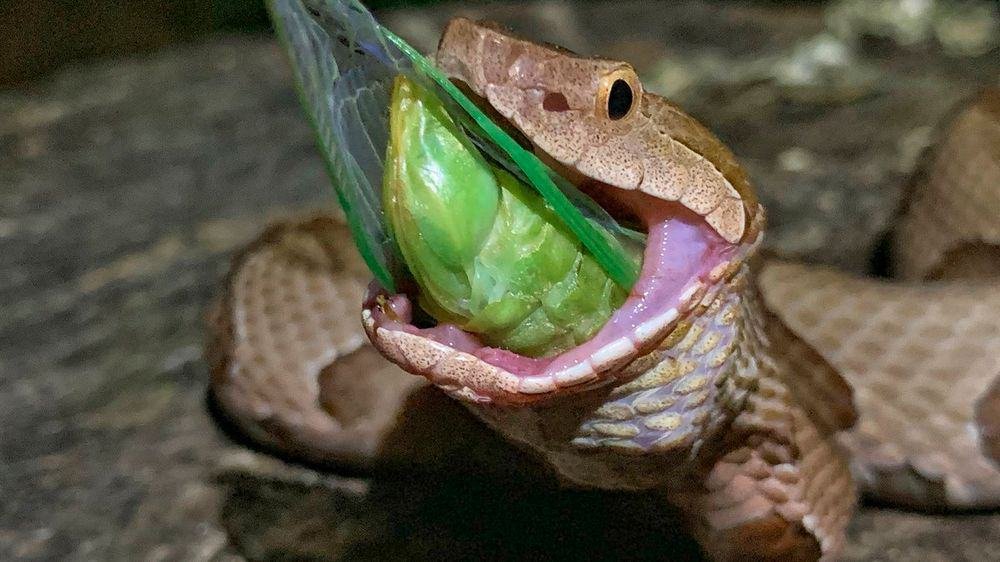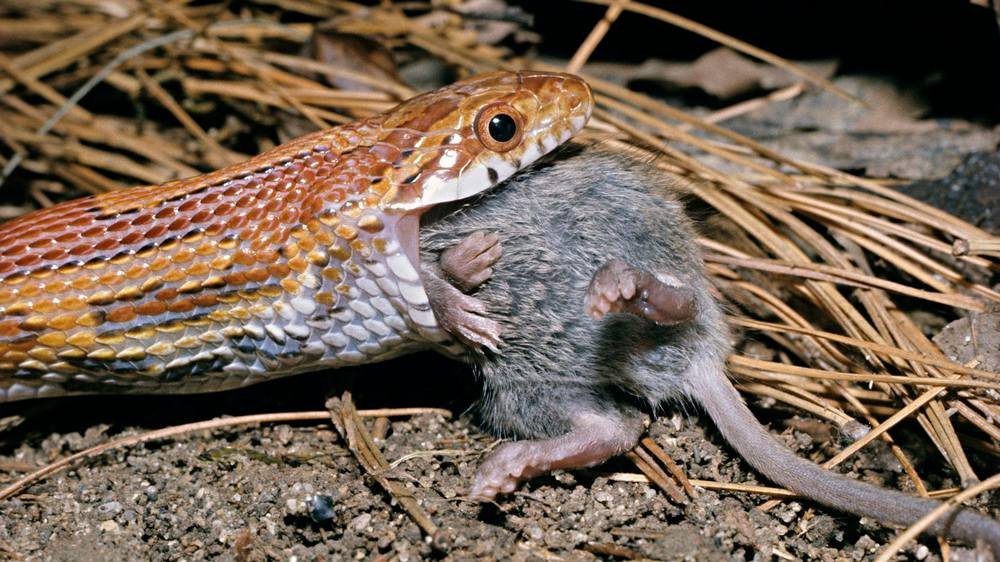
A fairly thin snake swallowing some huge prey many times its own girth.
Amazing. I myself have choked on peas.
If I tried to swallow something larger than my head, it would not go well.
Does it every go badly for snakes?
Can a snake choke, and even die, because its eyes were too big for its mouth?
Keep reading to learn if snakes can choke. We will also talk about regurgitation and bursting, two related issues that happen to snakes more commonly.
Table of Contents
Can A Snake Choke?
It is not common for snakes to choke on their food. If they do, it could be because they have a respiratory condition, which can lead to their food suffocating them.
What Is Choking?

Choking is when a foreign object becomes blocked in the windpipe and stops an animal from being able to breathe. If an animal can’t breathe, then oxygen can’t enter the body. If the foreign object isn’t removed in time, it can result in death.
Since snakes do not chew their food, and instead have a special acid for digestion, it is highly unlikely that they will choke. Even if a snake swallows prey that is too big for it, it will usually just spit this prey back out. This is known as regurgitation.
If the snake cannot spit the prey out because it has become lodged in the body, then this can become fatal to the snake.
Regurgitation
Snakes are able to repel their food before it reaches the stomach. This is referred to as regurgitation. Sometimes it’s compared to vomiting, but it is not the same thing.
Vomiting is expelling food that has been sitting in the stomach and has already been digested (at least partially). It also does not come out whole, since it has been chewed. When a snake regurgitates its prey, the prey comes out whole, since snakes do not chew.
Bursting
What could be worse than regurgitation? Bursting, that’s what. This can happen when a snake attempts to eat something that is far too big for it. Bursting doesn’t happen very often, because snakes are usually good judges, when it comes to sizing up their prey.
Bursting is when a snake’s stomach literally bursts, and its prey then sticks out of the snake. Because some snakes eat their prey while it is still alive, bursting can also happen when the prey is actually able to fight its way out of the snake’s stomach. It can do this by clawing, or even chewing, it’s way through the snakes flesh.
If you are a snake pet owner, you will need to make the choice of what food you feed your pet. To avoid regurgitation or bursting, you should make sure you are feeding it prey that is not too big, but also prey that will still fill it up. Common prey to feed your pet snake includes small rodents or chicks.
Suffocation

Even though it is not common for a snake to choke, there are still some instances when it could happen. Two reasons a snake may choke are it it has a respiratory condition or if its prey is not clean.
If a snake has a respiratory issue, it could suffocate due to blocked airways while it is trying to digest its prey. Respiratory issues can make it difficult for them to swallow their prey.
And even if they do manage to swallow it, it could damage their airway even more. That, in turn, could affect the next time they eat and they may not be so lucky then.
Another reason a snake may suffocate is if its prey is too dirty. This problem is compounded if your snake also has a respiratory condition. Any feathers or mangled fur from the prey could become lodged in the snake’s airway and stop it from being able to inhale oxygen or exhale CO2.
If you have a pet snake and you know it has a respiratory problem, I would recommend making sure all prey is clean and of an easily digestible size for your snake, especially while it is recovering from its illness. This should help ensure your snake can digest its food without causing any problems.
Snakes Rarely Choke: Final Thoughts
A snake choking on its food is a rare event. It usually only happens if the snake is suffering from a respiratory condition.
But regurgitation is pretty common. That happens when a snake either can’t swallow the meal it chose, or it suffers some type of stress and expels the food before finishing swallowing it.
Bursting is also a possibility, albeit a rare one. But we’ve all seen the photos of a snake with a crocodile or alligator sticking out of a hole in its side. That is a case of bursting, where the prey ended up biting its way back out. Moral of the story: don’t eat something that can eat you back from the inside!
Leave a Reply